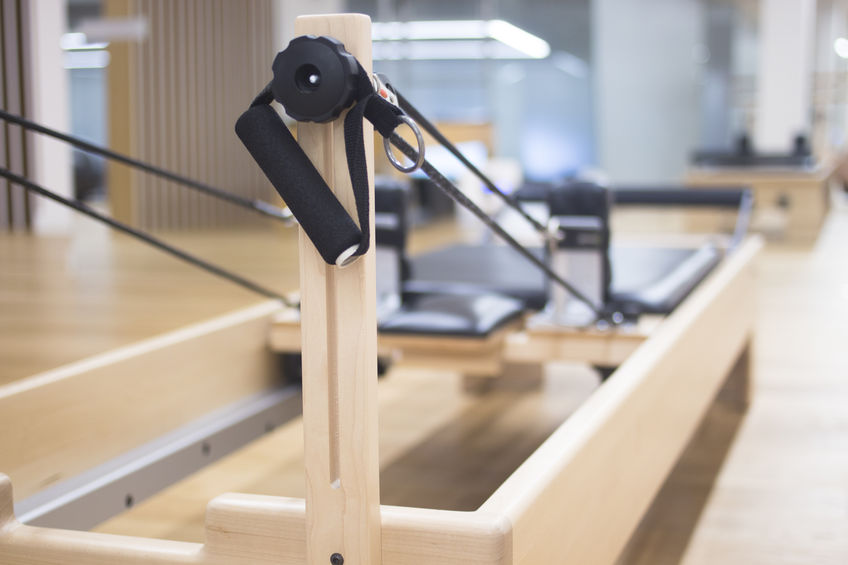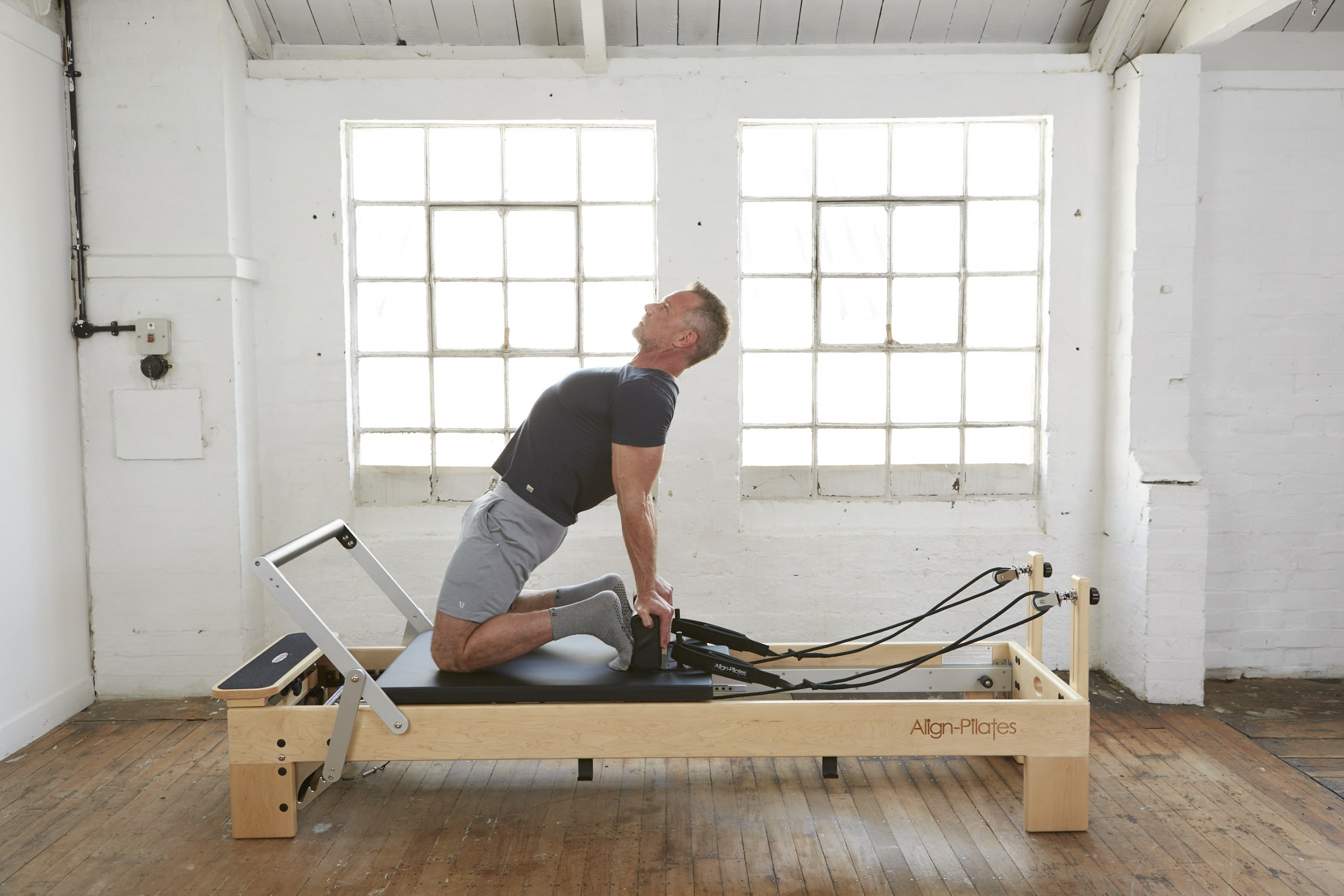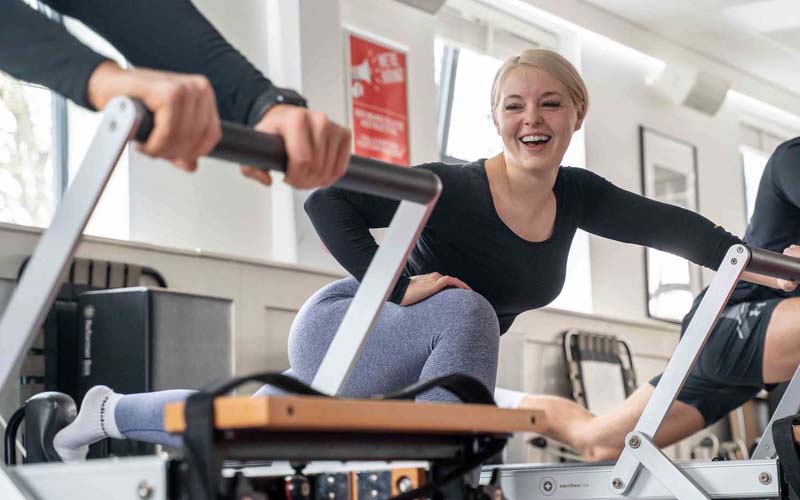

Types of reformer—does it matter what reformer you use?
Considering buying a reformer or training to become a reformer teacher? You'll definitely want to read what the experts have to say about reformers today.
The recent surge of interest and popularity in group ‘reformer’ training (not to be confused with reformer Pilates) has given rise to several ‘entrepreneurial’ happenings.
One such happening has been the proliferation of several newer pieces of equipment and manufacturers entering the marketplace, creating their own branded designs of Pilates reformers. While some maintain the name reformer, others have placed their own creative twist on the name and spelling of this equipment (much like the vegan version of cheese, being named cheezly to differentiate).
Amongst those entering the ‘new for them’ reformer market are an established manufacturer of gym equipment, as well as a well-known supermarket chain; the latter who it is was rumoured (via social media – so it must be true) sold out of their more affordable reformers on the first day. It has since been rumoured, also via social media that many of these are now being re-sold on various second-hand selling sites like Ebay.
Now, reformers are expensive and a significant financial investment, but does it matter what reformer you use? The Pilates community believe it does.

A second component of the Pilates lawsuit which ended in the year 2000 regarding the trademark and manufacture of Pilates equipment, including the reformer, or universal reformer as it was originally named by Joseph Pilates himself.
The outcome of this ruling was overturned and the legal decision and precedence set was that the manufacture of Pilates equipment could not be monopolised by a single entity.
Some historical milestones shared by Hannon (2019) and Howard Steel (2020) discussing this landmark lawsuit in include:
The new manufacturers entering the Pilates market have now opened a few more areas for controversy and debate.
I spoke with two classically trained teachers recently after reading an article in Health Club Management (2025) written to explore the range of reformers available, and to share manufacturers views of the differentiating features of different brands.
The teachers feedback included:
“So, the (brand) reformer I’ve had for 10 years doesn’t have these features! And please, it’s a carriage, stop calling it a bed”
“I hope company (X) have done their homework because that feature was trademarked by company (Y) years ago”

So, what are some of the features that differentiate classical and contemporary reformers. (See table 1.1. Courtesy of Alison Salmond at Osteopilates).
Classical reformer | Contemporary reformer |
Size and dimensions of the carriage/reformer – original 80”, 86”(for jump board), 89” | Usually much larger in size and wider up to 92” long |
Drag of the wheels on the carriage | Usually very fast and carriage pulls back into stopper with little to no effort |
Straps – Leather / position / length / angle to carriage (no adjustable pulleys) | Straps ropes – often longer – Adjustable pulleys which change angle of pull. Changes essence of exercises such as 100, etc. |
Leather / aluminium / wood handles | Soft material feet / Hand straps |
Foot bar – Smaller and lower in height/potentially closer to carriage | Foot bar – adjustable – higher than traditional footbar, often further away from carriage which alters start position and flexibility of position. |
Padding. Often little padding / Vinyl. | Padding varies often dense foam |
Foot strap, smaller and more compact. More security in short box exercises | Foot strap around frame, strap often lose and not supportive which allows participants to lift feet off carriage and inability to open up through the hips |
Shoulder rests. Feet fit snugly into shoulder rests for heel connection Shoulder rests. | Often shorter and participant loses heel connection, changes essence of exercises. |
Long / Short box height and width | Long / short box often much bigger and participants unable to perform exercises properly, losing the essence of the exercises. |
Springs. 4 x same strength springs | 5 Springs of different tensions. Often participants cannot perform exercises, so a lighter spring is used. The exercise has the ability to be ‘modified’ rather than omitted and picked up somewhere else in the system. |
Table 1.1. Design feature differences – classical and contemporary reformers. Shared with permission from Alison Salmond Osteopilates.
Classical reformers were created with specific design features that were based on the original design of Joseph Pilates, all of which impact the outcome of the movement – working from ‘centre’, which is an integral part of the Pilates system.
Contemporary changes to these designs, which in some instances impact movement outcomes, include the following:
Advocates for classical Pilates, Lewitt and McPherson (2024) indicate that the apparatus used also reflects the ‘naming’ dilemma (discussed in the last article). They suggest ‘If the apparatus is not based on original Pilates design’ then the term Pilates-Based exercise should be used, not Pilates.
One final thing for consideration is that the reformer design can make a big difference to the Pilates experience – both for the instructor and the client.
Classical reformers were created with specific design features aimed to reflect the integrity of the system and working from ‘centre’.
Some of the changes to these designs by contemporary and indeed newer manufacturers impact not only the slide and speed at which the carriage moves, but also the angle of pull on the straps, which affects the nature and essence of the exercise. This includes, but is not limited to where the user ‘feels the exercise’ – a significant part of their experience. There are instances with newer equipment where the apparatus does in fact cause participants to feel exercises more in their limbs, rather than through centre.
Indeed, I know of several teachers who have started with contemporary designs and later invested in classical equipment to maximise their personal practice as well as improve and maximise that of their clients’ also.
For those interested in learning a little more about the differences between classical and contemporary reformers and the client experience, Alison Salmond Osteopilates shared two highly informed and informative recordings via social media (links in references).

There are many different styles of reformers, some designed for home use, and some designed specifically for client work. There are also pseudo reformers becoming increasingly more popular and widely available. Many instructors are unable to distinguish between the two, so what hope do clients have?
Reformers that are designed for working with clients, whether classical or contemporary design, are expensive and represent a considerable investment!
Since the design can make a significant difference to the participant’s experience, the best advice is to try out a few reformers first, ideally under the guidance of a few experienced teachers, before making a large investment. Simply buying them online without first trying them is definitely not advised.
At the same time, don’t just go for cheap; there is often a reason why some things are cheap. Whether we are talking about reformers, reformer training courses, or handbags, cheap is cheap.
The good thing is that reformers, certainly the classical designs, but also some of the more contemporary designs, hold their value, so these can always be sold onwards at a later date. That said, if you buy well first time, the likelihood is, you won’t want to sell it on!
References:
Alison Salmond Osteopilates (2025). ‘Differences between classical and
contemporary reformers’ Accessed on 01/07/2025; available from:
https://www.facebook.com/watch/?v=1058929736212384
Alison Salmond Osteopilates (2025). A Layperson’s experience’. Accessed on
01/07/2025; available from:
https://www.facebook.com/watch/?v=1103229371703712
Hannon, B (2019) The Lawsuit that freed Pilates. Accessed on 25/06/2025;
available from: https://pilateslessons.org/the-lawsuit-that-freed-pilates/amp/
Health Club Management (2025) Insight. Boom time for Pilates. Accessed on 01/07/2025; available from: https://www.healthclubmanagement.co.uk/health-club-management-features/Insight-Boomtime-for-pilates/37087
Howard Steel, J. (2020) Caged Lion. Joseph Pilates and His Legacy. USA: Last Leaf Publications.
Lewitt, M. S and McPherson, L.A (2024) Pilates’ in 2024: Useful Clinical Tool or Commercial Catchphrase? Accessed on 23/06/2025; available from: https://www.heraldopenaccess.us/openaccess/pilates-in-2024-useful-clinical-tool-or-commercial-catchphrase
Pilates, J. and Miller, W. J. (1945) Return to life through Contrology. USA: J.J. Augustin. Republished in 1998, USA: Presentation Dynamics.
Pilates, J. (1934) Your Health. USA: Joseph H Pilates. Republished in 1998-2008, USA: Presentation Dynamics.
Back to articlesStep inside the world of Pilates
Great news, you're on the list...